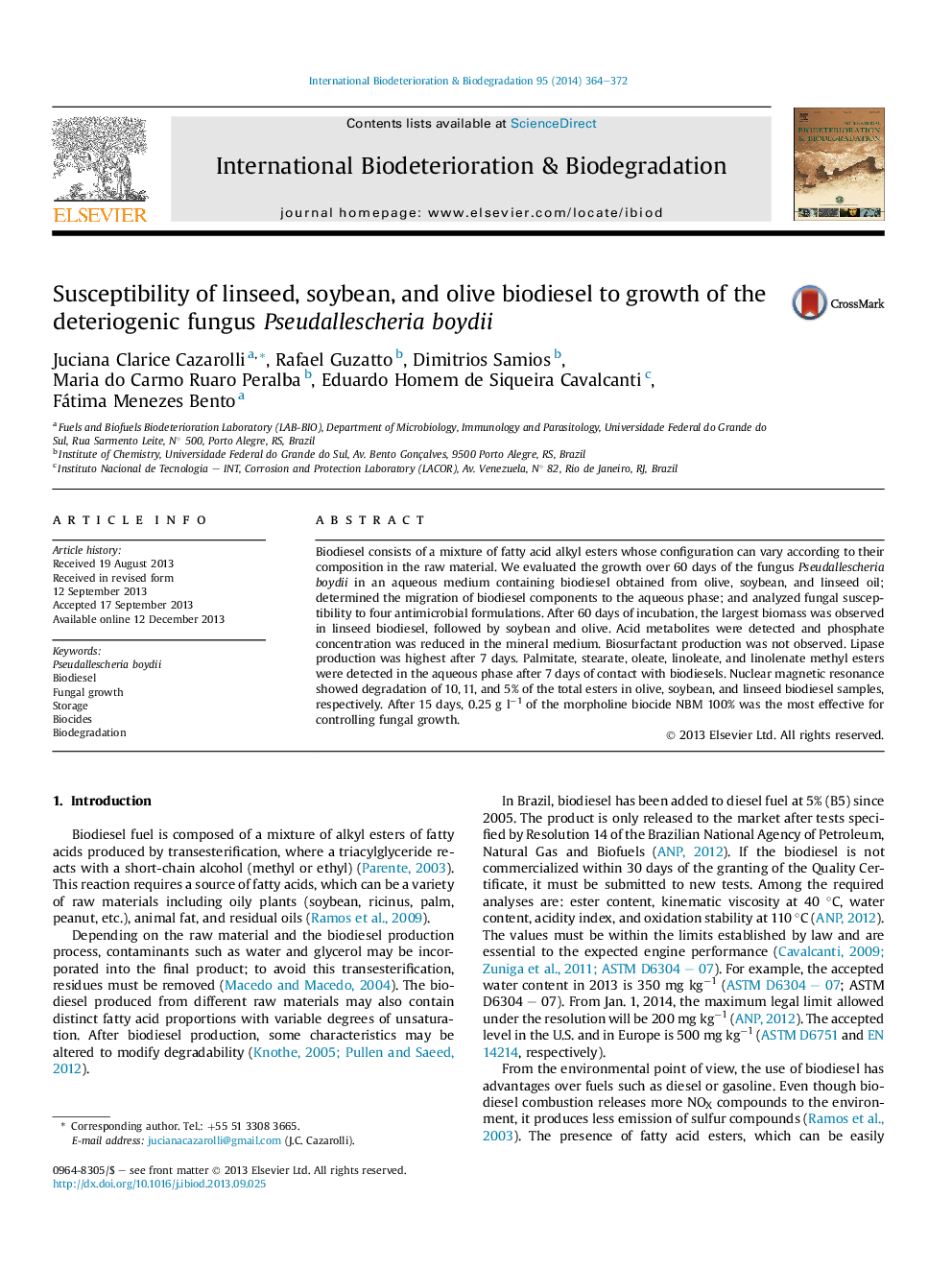| Article ID | Journal | Published Year | Pages | File Type |
|---|---|---|---|---|
| 4364697 | International Biodeterioration & Biodegradation | 2014 | 9 Pages |
Abstract
Biodiesel consists of a mixture of fatty acid alkyl esters whose configuration can vary according to their composition in the raw material. We evaluated the growth over 60 days of the fungus Pseudallescheria boydii in an aqueous medium containing biodiesel obtained from olive, soybean, and linseed oil; determined the migration of biodiesel components to the aqueous phase; and analyzed fungal susceptibility to four antimicrobial formulations. After 60 days of incubation, the largest biomass was observed in linseed biodiesel, followed by soybean and olive. Acid metabolites were detected and phosphate concentration was reduced in the mineral medium. Biosurfactant production was not observed. Lipase production was highest after 7 days. Palmitate, stearate, oleate, linoleate, and linolenate methyl esters were detected in the aqueous phase after 7 days of contact with biodiesels. Nuclear magnetic resonance showed degradation of 10, 11, and 5% of the total esters in olive, soybean, and linseed biodiesel samples, respectively. After 15 days, 0.25 g lâ1 of the morpholine biocide NBM 100% was the most effective for controlling fungal growth.
Related Topics
Life Sciences
Environmental Science
Environmental Science (General)
Authors
Juciana Clarice Cazarolli, Rafael Guzatto, Dimitrios Samios, Maria do Carmo Ruaro Peralba, Eduardo Homem de Siqueira Cavalcanti, Fátima Menezes Bento,
